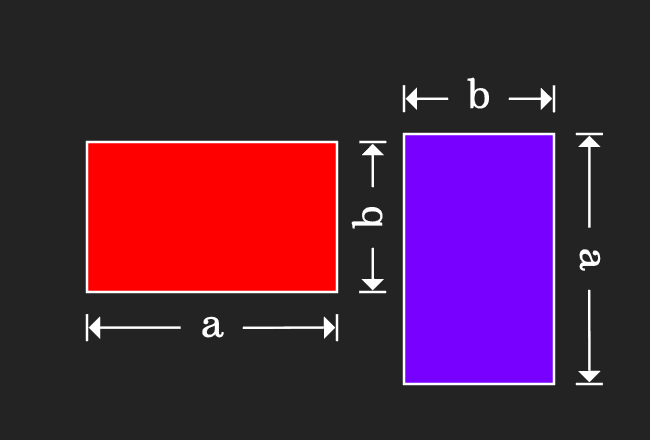The commutative law of multiplication can be proved in algebraic form by the geometrical approach. In this geometric method, the areas of two rectangles are expressed in algebraic form and then the relationship between them is analyzed mathematically for expressing the commutative rule of multiplication in mathematical form.
We are about to construct a rectangle in this step for finding its area in algebraic form.


In this step, we are going to draw another rectangle for evaluating its area mathematically.
Now, let us compare them to understand the property of the equality.

In the first step, it is calculated that the area of a rectangle is $a \times b$. Similarly, it is also calculated that the area of another rectangle is $b \times a$ but geometrically the areas of both rectangles are equal.
$\implies$ $a \times b$ $\,=\,$ $b \times a$
$\implies$ $a.b$ $\,=\,$ $b.a$
$\,\,\, \therefore \,\,\,\,\,\,$ $ab$ $\,=\,$ $ba$
Therefore, it is proved that the product of any two operands is equal to the product of the same operands in reverse order. The law is called as the commutative property of multiplication.
A free math education service for students to learn every math concept easily, for teachers to teach mathematics understandably and for mathematicians to share their maths researching projects.
Copyright © 2012 - 2023 Math Doubts, All Rights Reserved